Controlling your own chaos
 In many ways, the work of leadership is the work of controlling chaos. It's a given that change is relentless, but to embrace change is to embrace chaos. Likewise, if you resist and avoid change, you feed chaos, because holding on to status quo is unsustainable, short-term thinking, as current strategies and systems will wither over time.
In many ways, the work of leadership is the work of controlling chaos. It's a given that change is relentless, but to embrace change is to embrace chaos. Likewise, if you resist and avoid change, you feed chaos, because holding on to status quo is unsustainable, short-term thinking, as current strategies and systems will wither over time.It's also a given that problems will occur, equipment will break, seemingly good decisions will backfire, and employees will come and go. For this discussion, I'm simply going to define chaos as a state of varying degrees of disorder and confusion.
Chaos may be inevitable, but to a large degree, it is also controllable. Why? Because much of the chaos that surrounds and stresses leaders is self-inflected. Avoid a problem too long and it spins off waves of chaos. Over-commit yourself and chaos ensues. Hit the launch button on a new initiative or project before it’s ready and there will be chaos. Give incomplete instructions and poorly defined expectations and rest assured, there will be chaos. Keep a toxic employee on payroll too long and there will be chaos. I’m sure you get what I’m saying here.
The problem with chaos is that leaders eventually build up a level of tolerance for it. They have to be able to cope with chaos in order to navigate through the daily stress of leading a company. It’s much like understanding and managing your heart rate zones in running and cycling. Zone 1 is easy for “recovery.” Zone 2 is an endurance pace for long distances. Zone 3 is a high level of aerobic activity. Zone 4 is pushing yourself to that point you can sustain without going anaerobic. Zone 5 is maximum anaerobic effort that is impossible to hold for very long. As a leader, you should be able to manage chaos in zones 1 - 3. Zone 4 chaos is a period of high stress that you can manage through - but not a level you want to stay in for an extended period. Zone 5 is where chaos becomes crisis. Living and leading in zone 5 is unsustainable and outright unhealthy.
Here are some no-compromise strategies to control your own chaos:
- Chaos is an outcome: Chaos is the result of something that didn’t go right. All outcomes have drivers. As leader, it’s your job to find, isolate and eliminate the driver. The challenge with chaos drivers is that they are often rooted in the leader’s or the company’s collective thinking and behavior. The chaos driver may be a flaw in communication and/or information flow, a system that was broken or not followed, lack of training, double standards, leader wasn’t paying attention … the list goes on. As always, the forensic search for the chaos driver begins with the face in the mirror.
- Rethink your chaos zones: If you’re that multi-tasker who thinks you can handle anything and everything, you’re wrong. Maybe you’re the micro-manager that has your tentacles wrapped around every project and decision. Maybe you just made some bad decisions. If you’ve been functioning for extended periods in chaos zones 4 or 5, chances are you’ve been having thoughts of throwing in the towel and getting out. Too often, I see leaders and owners so deep in chaos and stress that they’re stuck and afraid. Getting out of the extreme chaos zones requires a plan and taking action. This is where the services of a business coach are invaluable. Remember, chaos is a state of great disorder and confusion, which means you need expert guidance and coaching to show you the way out - and keep you out. And the only way coaching works is if you do the work and follow the plan. Too often, I see leaders begin with good intentions only to slip back into chaos-producing thinking and behavior.
- Overwhelmed sucks: The byproduct of chaos is being overwhelmed. With fires burning all around you, you should feel overwhelmed. Being overwhelmed makes decision-making difficult and feeds the “what-ifing” things to death. If you equate being overwhelmed to starting a complex jigsaw puzzle, you begin by organizing the pieces into like colors and straight edges. You find a few pieces that fit and build on it. Before you know it, the puzzle is taking shape and the solution is within sight. There’s no magic pill to instantly cure being overwhelmed. Understanding the drivers, having a plan, and making strategic and steady progress will build confidence and momentum. You must attack and chip away at chaos until it’s gone - or contained in a chaos zone you can deal with.
- Fix the big stuff: One of the essential tenets of No-Compromise Leadership is, “If it needs to be done - get it done.” If there is a toxic employee on your payroll, why are you still signing his or her paychecks? I just never understand reasons like, “I don’t want my unemployment rates to go up,” or, “We can’t afford to lose the revenue he/she brings in.” Is the minor increase in your unemployment anywhere close to the damage that the employee is doing to your culture and your stress level? If it were the loss of revenue you fear, what would you do if the employee quit effective immediately? You’d have to deal with and work through it. I’m not suggesting the carefree firing of problem employees. I am suggesting that when the chaos level passes into zone 4, it’s time to deal effectively with the problem. This goes for leadership, financial, operational and customer service problems as well.
It’s easy to say, “manage what’s on your plate” and “fix the big stuff.” But controlling and keeping chaos at bay will always be about your approach to leadership and taking action.
- - - - - - - - -
Please share your thoughts with me about today's Monday Morning Wake-Up. Click above to comment.
Pass this e-mail on to your business colleagues, managers and friends. They’ll appreciate it.








Comments
No comments found. Start the conversation!
Leave a Comment